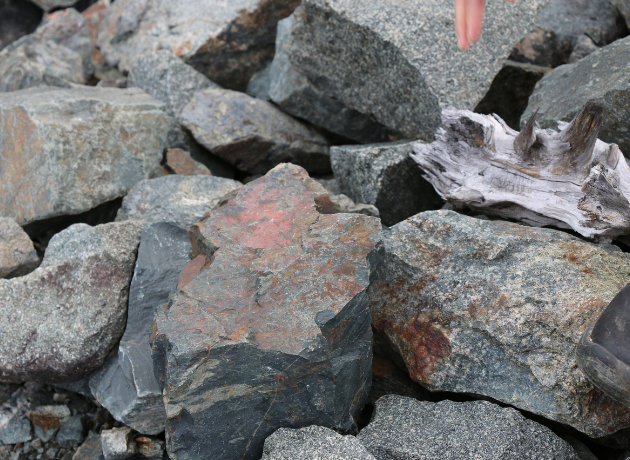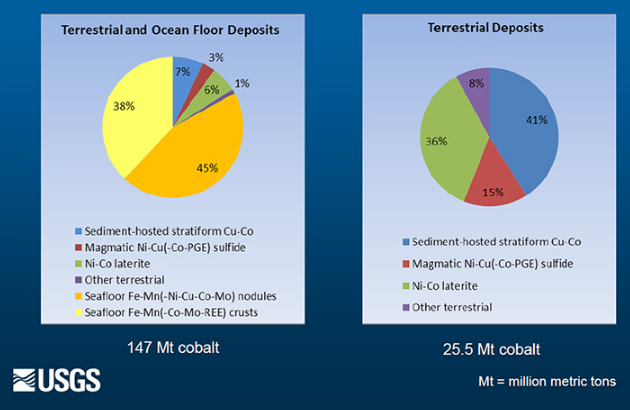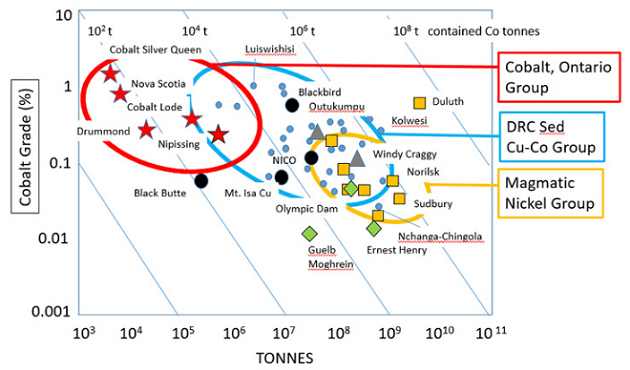First Cobalt Corp.
The Geology of Cobalt

Generally, cobalt is derived as a by-product metal in both terrestrial and ocean floor ore deposits (Figure 1; Shedd, 2015). Cobalt is concentrated as oxide and hydroxide minerals with Fe and Mn in seafloor deposits. In terrestrial deposits, Co is commonly associated with Ni in sulphide minerals which accounts for half of the known world resources. In the other half of the terrestrial deposits, Co occurs as a discrete mineral phase and hence processed as a primary metal.
The dominant ore deposit type for terrestrial deposits is sediment hosted Cu-Co examples; most found in the Central African Copperbelt in Zambia and DRC. Other terrestrial sources include iron oxide copper gold deposits and some sediment-hosted vein type deposits with a wide range of genetic origin.

Figure 1. Known global cobalt resources by ore deposit type.
Ore Deposit Examples
The contained cobalt content and concentration fall within discrete ranges according to ore deposit types (Figure 2). The largest resources of Co are low grade, but are significant due to the high volume of rock processed in both magmatic nickel-copper-PGE deposits and iron-oxide copper-gold deposits. A few deposits considered as volcanogenic massive sulphide type, Windy Craggy and Outukumpu, are Co-enriched. The connection for these deposits is an association to ultramafic and mafic intrusions either as the direct host or within the metal-source region where hydrothermal fluids have circulated. A wide range of grades and tonnages are found within the Central African Copperbelt. One of the largest resources is Kolwesi deposits which also contains over 32 Mt Cu (Hitzman et al., 2012). In Cobalt, Ontario, Co occurs with high grade silver veins that cut Archean volcanic rocks as well as Proterozoic sedimentary rocks and diabase sills. Peak production occurred from 1919 to 1931, so grades and tonnages are poorly defined. In many individual deposits, Co-Ni veins are separate from the silver-rich veins so Co tonnages are not well known. Published tonnage numbers reflect a milled value rather than mined.

Figure 2. Grade and tonnage distribution of important ore deposits world wide.

Figure 3. Location of important cobalt resources.
Source: https://www.firstcobalt.com/projects/geology-cobalt/

|
SITE SERVICES SUPERINTENDENT – COBALT REFINERY
Based at the Cobalt Refinery in Cobalt, Ontario, we currently have an exciting opportunity for a Site Services Superintendent to be a part of our Owner’s Project Team.